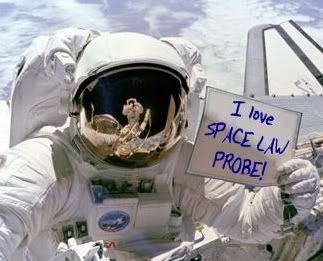9.20.2007
Still studying space solar power
 Yes, folks love to talk about and study the concept of space solar power (or space-based solar power or solar power satellites or whatever you want to call it, take your pick). This has been going on for decades. But talk is cheaper than microwaves in space.
Yes, folks love to talk about and study the concept of space solar power (or space-based solar power or solar power satellites or whatever you want to call it, take your pick). This has been going on for decades. But talk is cheaper than microwaves in space.As Leonard David notes, space-based solar power has been the subject of studies by the likes of NASA, the Department of Energy, the European Space Agency and the Japan Aerospace Exploration Agency.
Now it's the Department of Defense's turn.
But where is the final report from the National Security Space Office (NSSO) on space-based solar power? Good question. Over at the Space Solar Power public discussion forum (can I just call it a blog?) hosted by the Space Frontier Foundation to help with the NSSO study, director of the study, Col. (Select) Michael V. "Coyote" Smith, who is Chief of Future Concepts (love the official title; and I gather we can just call him Coyote) for the NSSO, updates us that his office will issue an interim report (not a final report) in October -- tentatively during a National Space Society event at the National Press Club on October 10th.
Coyote does "foreshadow" that interim report here. And one of the items he indicates the study will highlight as "requiring greater analysis," is: "Legal issues: Liability? Indemnity? Licensing? Frequency management?" Of course.
Coyote believes "broad international partnerships" are the way to go here. "First, to reassure the world that that space-based solar power is not a pathway to weaponize space. Second, to garner early support in the international community for additions and changes to space law, customs, and codes of conduct that will be required to make space-based solar power a reality. Finally, broad international partners will help industry find broad international customers to buy our energy product." Yup. More work for space lawyers.
Seaking of which, here is a white paper prepared for DOE by Carl Q. Christol entitled, Satellite Power System (SPS) International Agreements (Oct. 1978) in which he took an early look at international legal issues in connection with a geostationary space-based solar power system.
And if you think it's all international, here's a report by Allan D. Kotin on State and Local Regulations as Applied to Satellite Power System Microwave Receiving Antenna Facilities (also prepared for DOE, Oct. 1978). You'll burn a few watts reading through this.
Meanwhile, if you were wondering (as I was) why the Pentagon is so interested in space solar power, here is Coyote's answer (written on a napkin at a Washington D.C. pub, naturally), in which he specifies, "The emphasis throughout this study is that the DoD wants to be a customer of clean energy from space, not a producer." (But isn't DoD money a bit tied up? I hope they even afford to buy space power when it becomes available.)
With the business concept in mind, it's good to see some commercial thinking on space solar power at Google Lunar X Prize, which portrays the concept on its website this way: "Clean solar energy can be sent from space to the earth with solar collectors in high Earth orbit made from lunar materials. A single solar power satellite could power a major Earth city without CO2 or other pollution."
Yes. One day.
(Hat tip: Clark Lindsey.)






